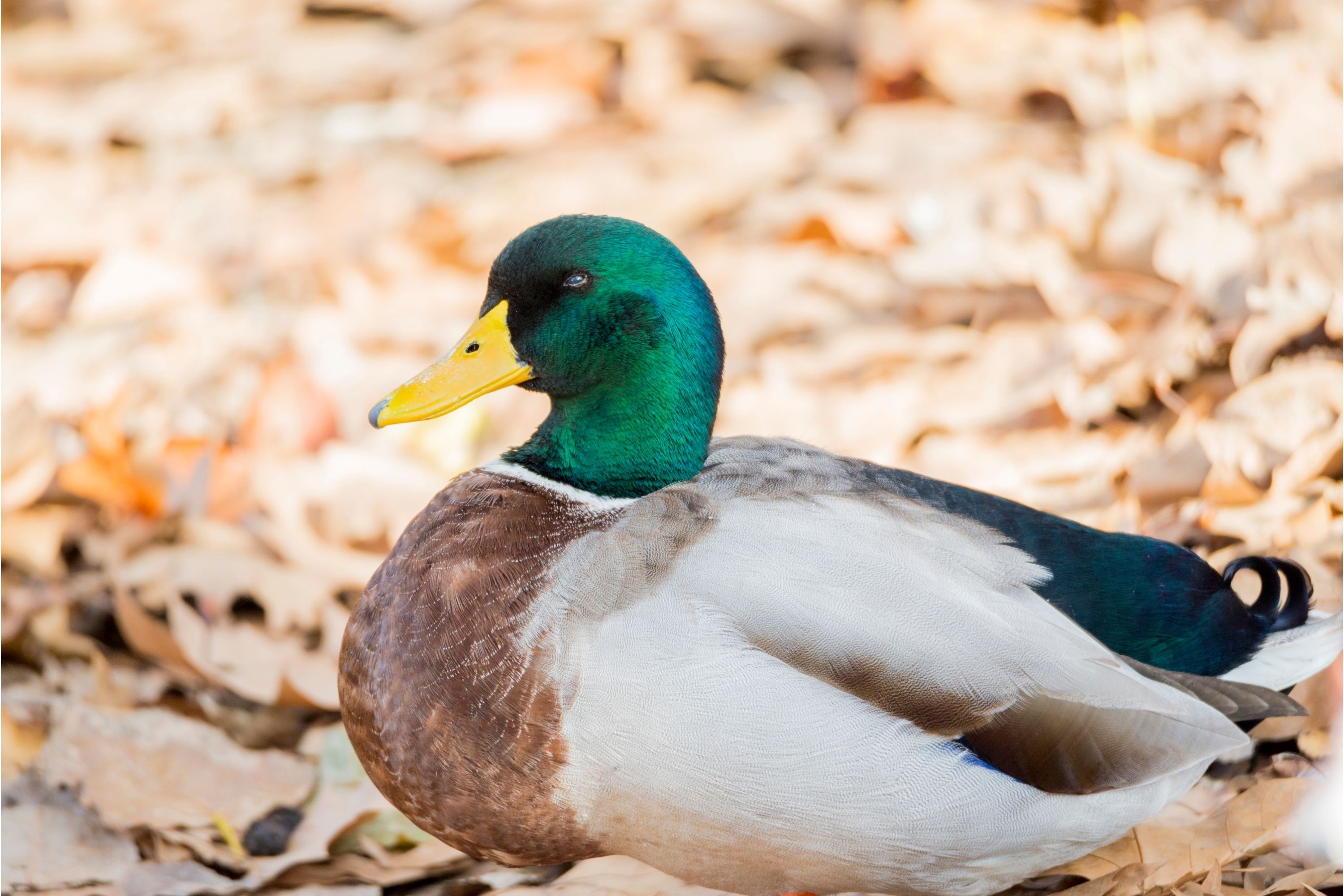Mallard
(Anas platyrhynchos)

Description
Anas platyrhynchos, commonly known as the mallard, is a widespread and well-known species of dabbling duck. It is native to the Northern Hemisphere, including North America, Europe, and Asia, and has been introduced to many other regions worldwide. In this article, we will explore the physical characteristics, habitat, behavior, diet, and conservation status of the mallard duck. Physical Characteristics Mallards are medium-sized ducks, with males being slightly larger than females. Adult males, known as drakes, have a bright green head, white neck ring, brown chest, gray body, black tail feathers, and a yellow bill. Females, known as hens, have a brownish-orange bill, brown mottled plumage, and a distinctive orange bill with black markings. Both sexes have a blue patch on their wings called a speculum, which is bordered with white and black feathers. Mallards are sexually dimorphic, which means that males and females have distinct physical differences. This is particularly true during breeding season when males develop a bright green head and distinctive markings. Outside of breeding season, males resemble females in appearance. Habitat Mallards are adaptable ducks and can be found in a variety of habitats, including wetlands, lakes, ponds, rivers, and estuaries. They prefer shallow water with vegetation for feeding and nesting. During the breeding season, they will also utilize upland habitats, such as grasslands and agricultural fields, for nesting and foraging. Behavior Mallards are social ducks and typically gather in flocks during the winter months. During the breeding season, males become territorial and will defend their chosen female and nesting site from other males. They communicate with a variety of vocalizations, including quacks, whistles, and grunts. Mallards are dabbling ducks, which means they feed by tipping their head underwater and grazing on aquatic vegetation, invertebrates, and small fish. They also feed on grains and other agricultural crops, which has made them a common sight in urban and suburban areas. Breeding and Nesting Mallards breed from late winter to early summer, depending on their geographic location. Males will perform courtship displays to attract females, including head bobbing, tail wagging, and wing flapping. Once a female has chosen a male, they will pair up and begin to search for a suitable nesting site. Mallards typically nest on the ground, in vegetation near water. Females will construct a nest from grasses and other materials and lay a clutch of 8-13 eggs. The eggs are incubated for about 28 days, and the chicks are precocial, which means they are born with downy feathers and are able to feed themselves shortly after hatching. Conservation Status The mallard is considered a species of least concern by the International Union for Conservation of Nature (IUCN). Its population is estimated to be around 10 million individuals, and it is widespread throughout its range. However, there are concerns about the potential impact of hybridization with introduced domesticated ducks and the spread of disease from captive ducks to wild populations. In addition, habitat loss and degradation, pollution, and hunting are all potential threats to mallard populations. Conservation efforts focused on protecting and restoring wetland habitats, as well as regulating hunting, can help ensure the long-term survival of this iconic species. Conclusion The mallard is one of the most widespread and recognizable duck species in the world. Its adaptability and ability to thrive in a variety of habitats have helped it become a common sight in both rural and urban areas. While its population is currently stable, conservation efforts are needed to ensure that mallards and other waterfowl species continue to thrive in the face of habitat destruction.
Taxonomic tree:







